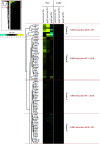Adenovirus E1B-55K controls SUMO-dependent degradation of antiviral cellular restriction factors
- PMID: 37916833
- PMCID: PMC10688335
- DOI: 10.1128/jvi.00791-23
Adenovirus E1B-55K controls SUMO-dependent degradation of antiviral cellular restriction factors
Abstract
Human adenoviruses (HAdVs) generally cause mild and self-limiting diseases of the upper respiratory and gastrointestinal tracts but pose a serious risk to immunocompromised patients and children. Moreover, they are widely used as vectors for vaccines and vector-based gene therapy approaches. It is therefore vital to thoroughly characterize HAdV gene products and especially HAdV virulence factors. Early region 1B 55 kDa protein (E1B-55K) is a multifunctional HAdV-encoded oncoprotein involved in various viral and cellular pathways that promote viral replication and cell transformation. We analyzed the E1B-55K dependency of SUMOylation, a post-translational protein modification, in infected cells using quantitative proteomics. We found that HAdV increases overall cellular SUMOylation and that this increased SUMOylation can target antiviral cellular pathways that impact HAdV replication. Moreover, we showed that E1B-55K orchestrates the SUMO-dependent degradation of certain cellular antiviral factors. These results once more emphasize the key role of E1B-55K in the regulation of viral and cellular proteins in productive HAdV infections.
Keywords: DNA damage response; E1B-55K; SUMO E3-ligase; SUMO proteomics; cell cycle regulation; chromatin assembly; post-translational modification (PTM); protein network analysis; small ubiquitin-like modifier (SUMO); viral transcription.
Conflict of interest statement
The authors declare no conflict of interest.
Figures






References
Publication types
MeSH terms
Substances
Grants and funding
LinkOut - more resources
Full Text Sources

